This year, I decided to make Challah Bread. I’ve enjoyed eating it over the years, and Andy remembers it fondly from growing up in NYC. But it’s always been something that we’ve bought rather than made. This year, I went a different way and started looking for recipes that would work for beginners making their first one. Alas, I didn’t find any that I loved, so I did some experimenting. If you are curious about how I made my first easy Challah Bread recipe, read on.
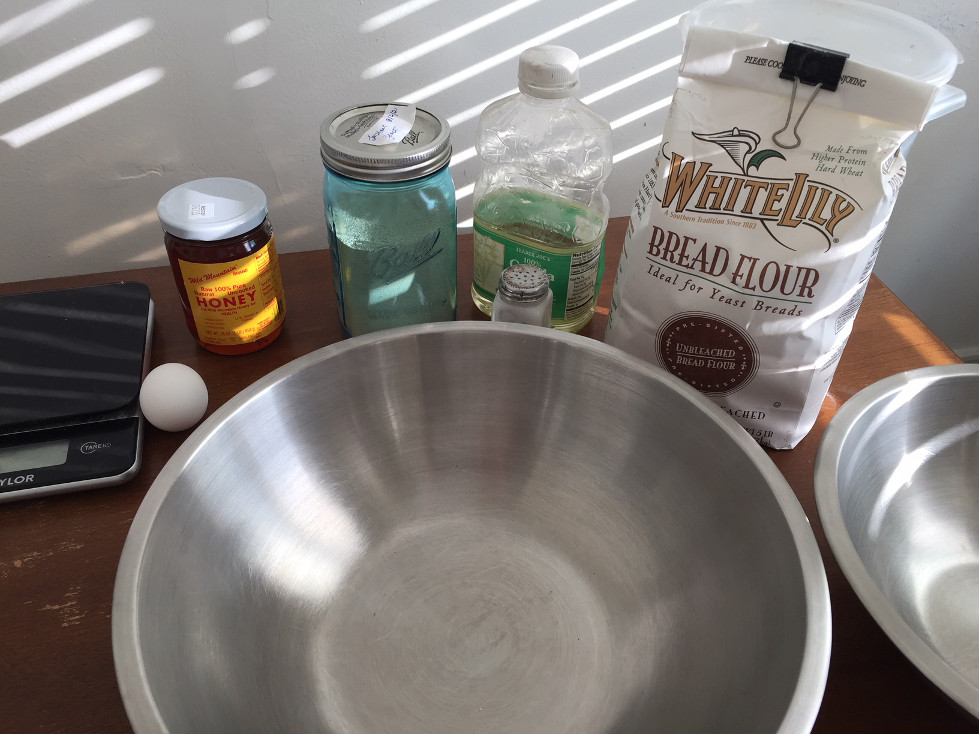
Challah Bread Recipe Ingredients
525 g Bread Flour (I used White Lily Bread Flour)
40 g White Cane or Granulated Sugar
10 g Instant Yeast
6 g Fine Sea Salt
115 g Warm Water
115 g Whole Room Temperature Milk
85 g Honey (I used “Wild Mountain” raw honey)
75 g Vegetable Oil (anything that doesn’t have a distinctive scent)
113 g Eggs
Challah Bread Egg Wash Ingredients
1 Egg
1 Tablespoon Cold Water
½ Teaspoon of Fine Sea Salt
Challah Bread Recipe Steps
Step 1 Weigh out all of your ingredients before starting – it just makes it easier. Plus, it allows for you to have your eggs and milk reach room temperature without fuss.
Step 2 Combine your dry ingredients (flour, sugar, instant yeast, and salt) in a large bowl or your stand mixer using the dough hook attachment.
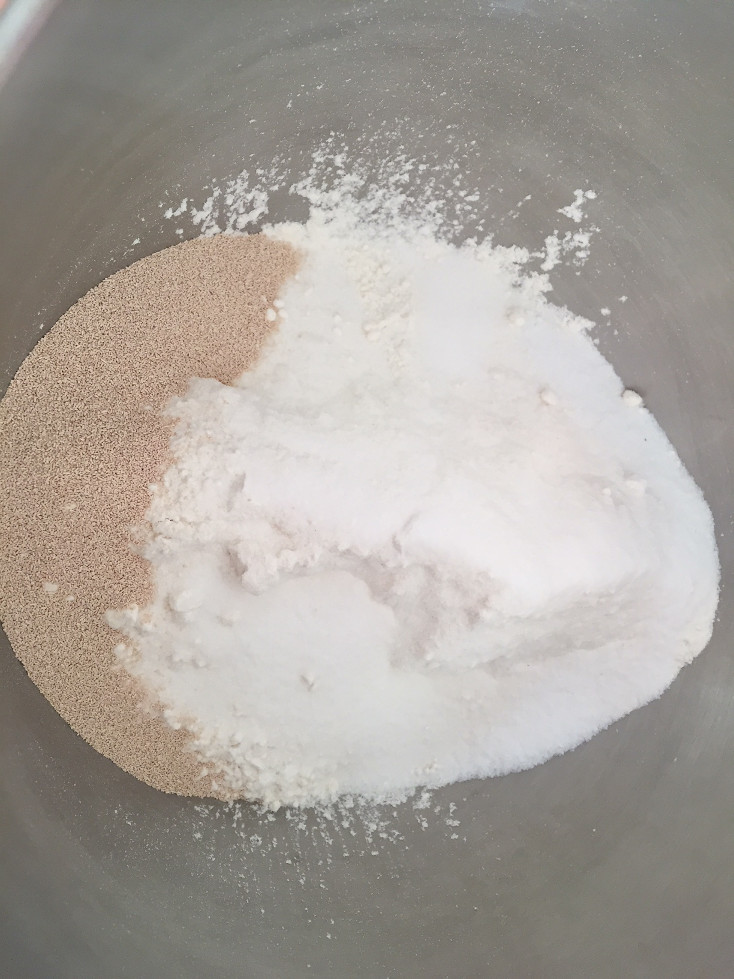
Note: Many moons ago, I saw Paul Hollywood give a bread demonstration that suggested adding the salt on one side of the mixer and the yeast on another until the blend. I know it had something to do with avoiding the inhibition of yeast, but I’m sticking with it more because of my love for the Great British Bake Off.
Step 3 While stirring on the lowest setting (or mixing gently by hand), add warm water, milk, honey, vegetable oil, and eggs. Stir for approximately 5 minutes.
Step 4 Knead at a medium speed in the mixer (or slightly more vigorously by hand) for another 8-10 minutes. The dough is super wet while still inside the mixing bowl. Don’t fret – you’ll add a bit more flour in a minute.
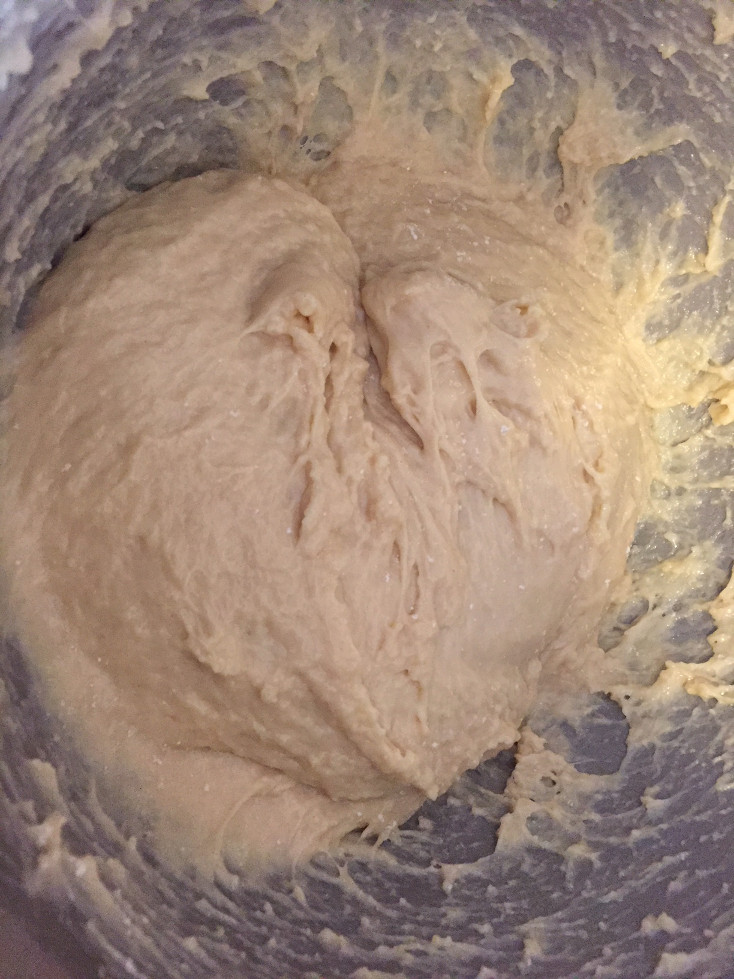
Step 5 Transfer the dough out onto a floured surface to avoid excessive stickiness. If it has no give, knead more by hand before shaping it into a ball.
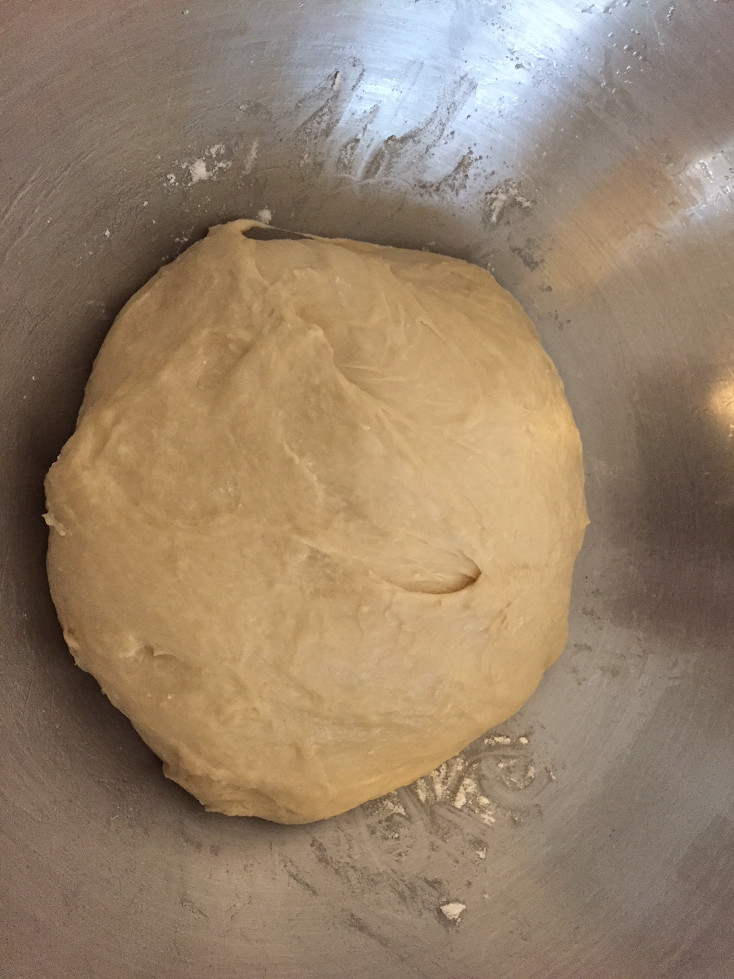
Step 6 Place the ball into a lightly greased bowl and cover it with plastic. Let it rise until it doubles in size. Mine took about 1 hour 15 minutes.
Step 7 Turn the dough out onto a floured surface and punch down gently. Spread it into a rectangular shape, very gently as not to knock out all the air.
Step 8 Using a dough cutter or sharp knife, cut the dough into 3 equal pieces.
Step 9 Remember playing with Play-Doh as a kid? That early training is going to do wonders. Take each section of dough, and roll it into a long, snake-like shape. Don’t work it too much, or it might start to stick, but you will want to elongate it enough to create the strands for braiding.
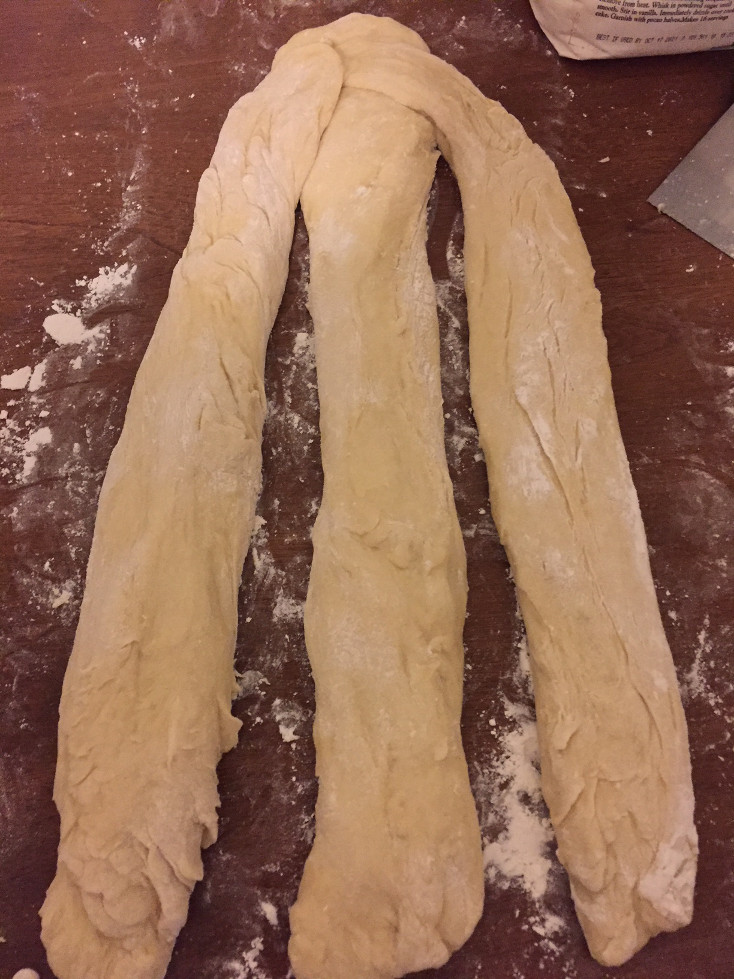
Step 10 After each section is rolled, pinch the top end together of all three strands to create your braiding base.
Step 11 Begin braiding as you would hair. I started with moving the middle piece over the left part, which moves the left into the middle. Then it moves over the right piece, etc. When you get to the bottom, pinch the end together to help keep the braid in place.
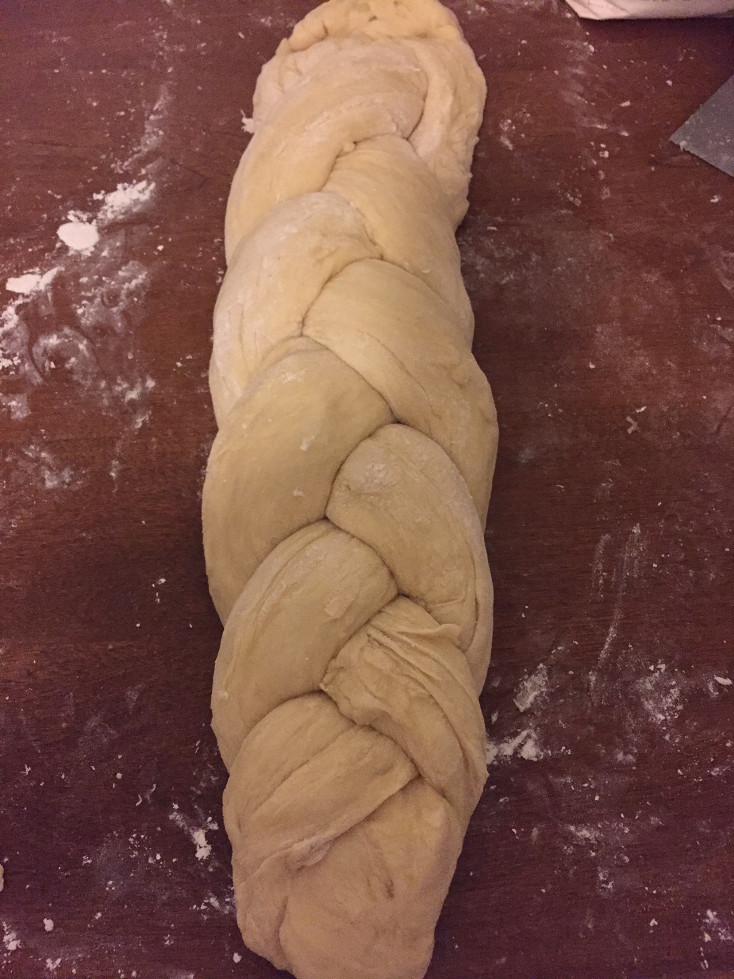
Step 12 Prepare a large baking sheet with parchment paper.
Step 13 Transfer the braided dough onto the baking sheet for its second rise. Cover it with plastic wrap or lightly cover in a plastic bag for approximately 35-40 minutes. You see it start to get puffy again.
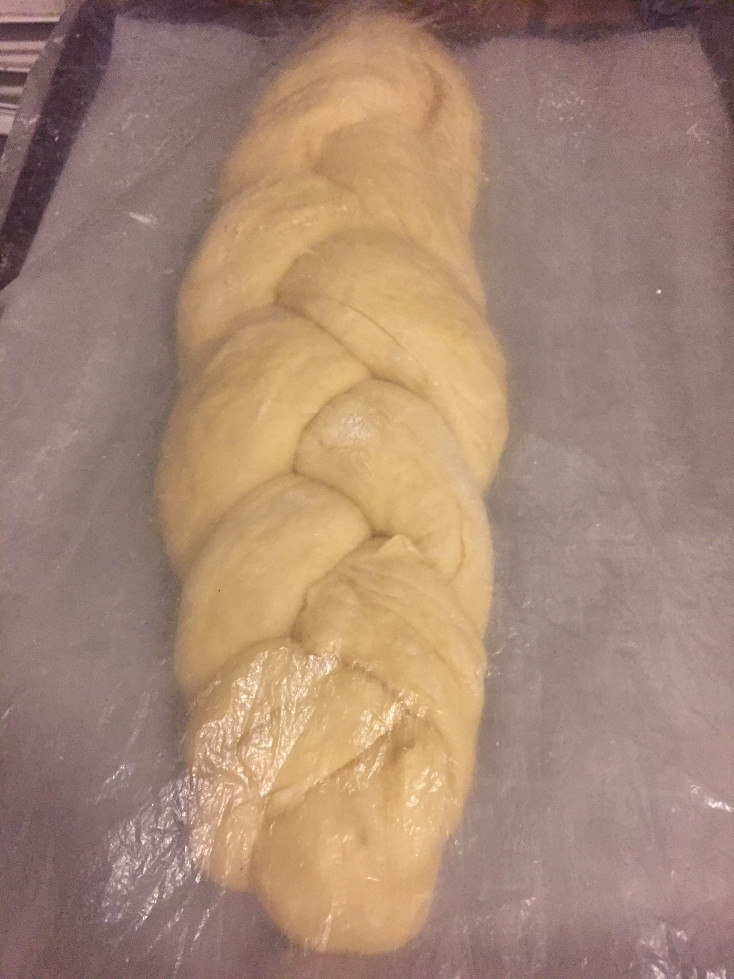
Step 14 Preheat the oven to 350 degrees F during this second rise.
Step 15 Prepare your egg wash.
Step 16 Just before baking, use a pastry brush to coat the Challah Bread dough lightly.
Step 17 Place the dough onto the middle rack for 15 minutes.
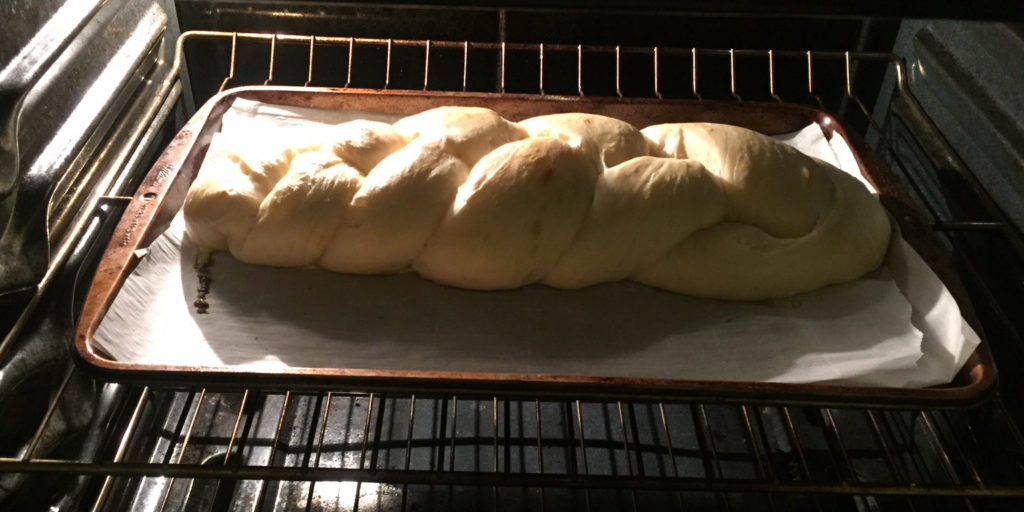
Step 18 Because the dough expands as it bakes, pull the dough out and do a second egg wash to the now exposed middle part of the braid.
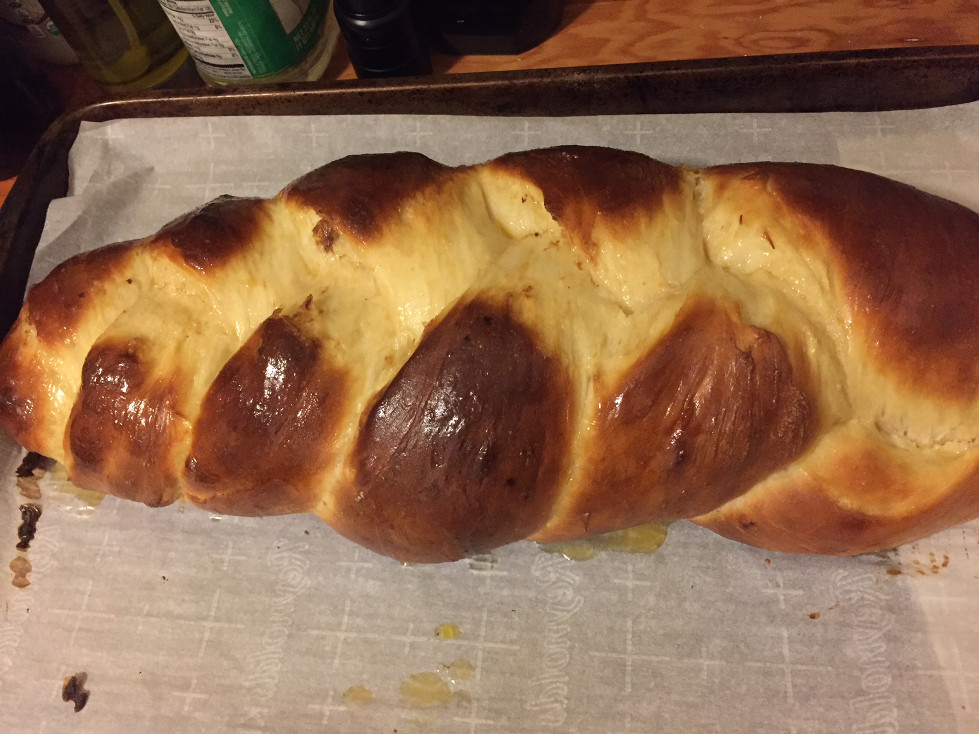
Step 19 Turn the pan before putting it into the oven so that a different side is toward the back of the oven. Continue baking for approximately 10-15 minutes. If it doesn’t seem done but is in danger of burning, go ahead and tent it using aluminum foil (Andy’s idea to save my loaf from burning!)
Step 20 Keep a close eye because different ovens and bread thicknesses will bake at different speeds. You will know it is done when you thump the bottom of it and you hear a hollow sound.
Step 21 Cool on a wire rack before serving.
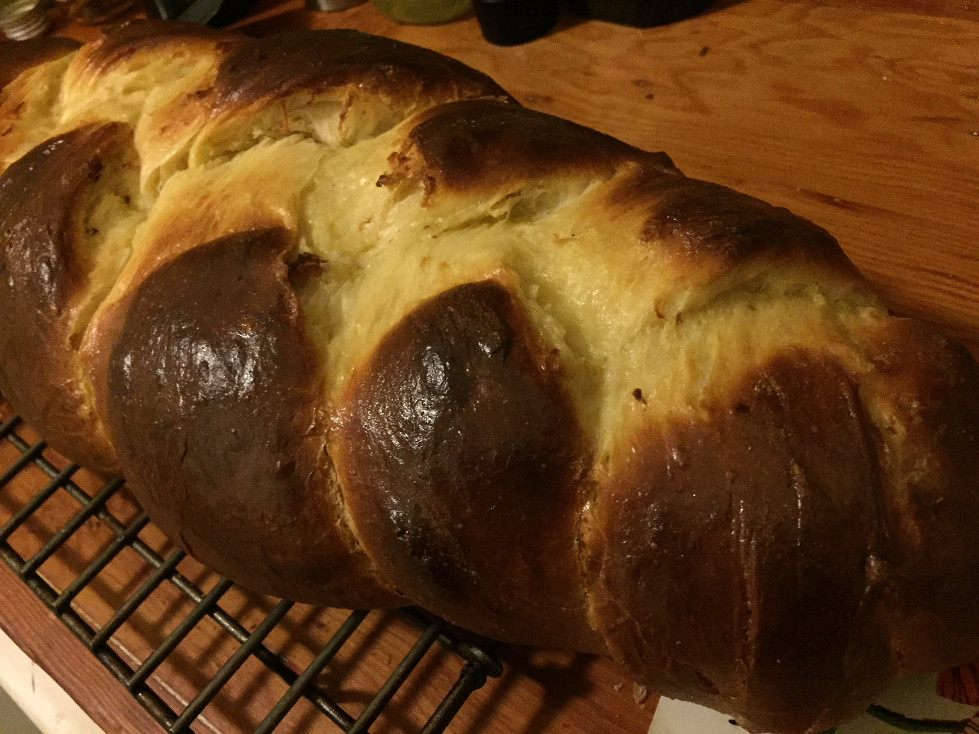
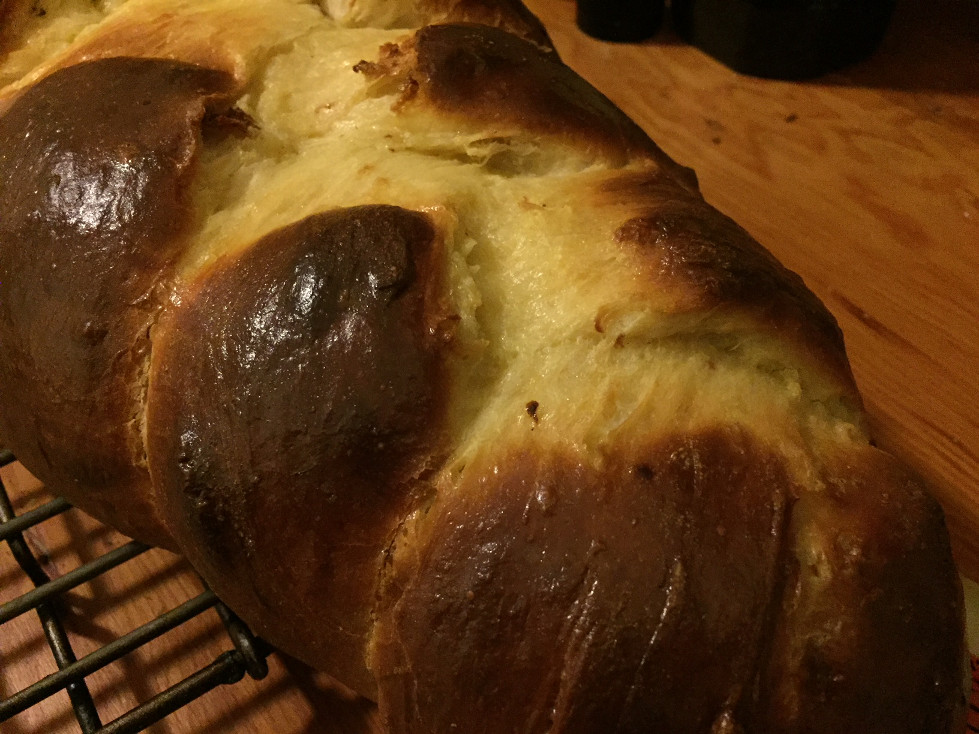
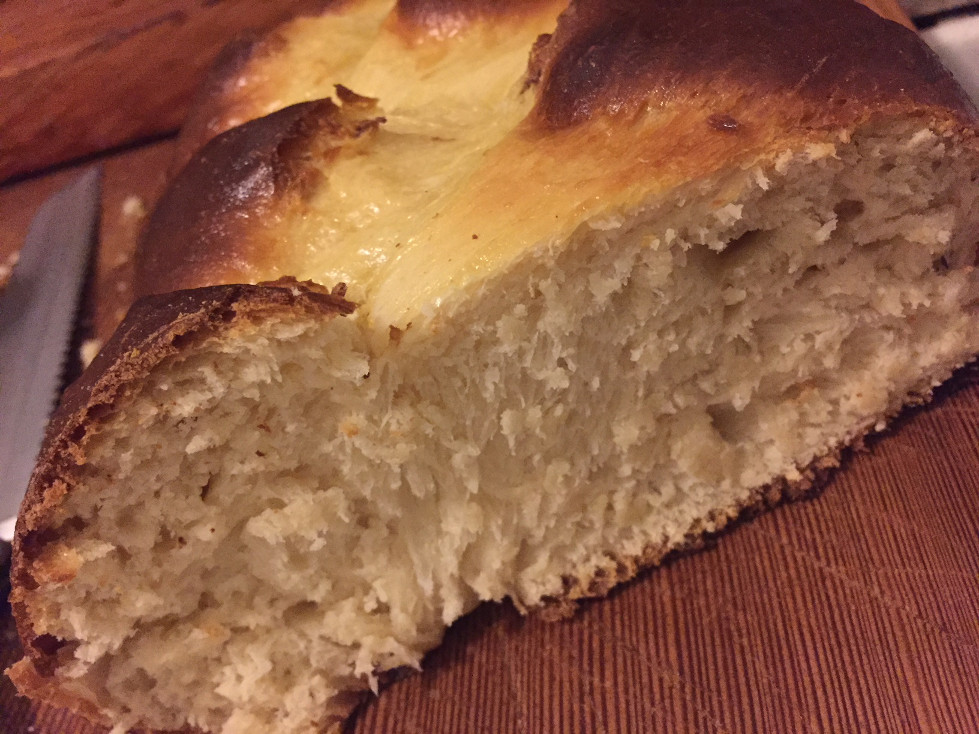
Overall Challah Bread Recipe Impression
I liked the end product, and Andy really enjoyed it. I might prefer kneading the dough by hand versus using the mixer. I feel the dough using the mixer stays far wetter, and I had to add some flour to shape it. I’m also not sold on the need for honey; although there was a lovely flavor to it, it doesn’t make such a huge difference that you should run out and buy it if you don’t already have it.
For more food and wine discoveries and recipes, click here.